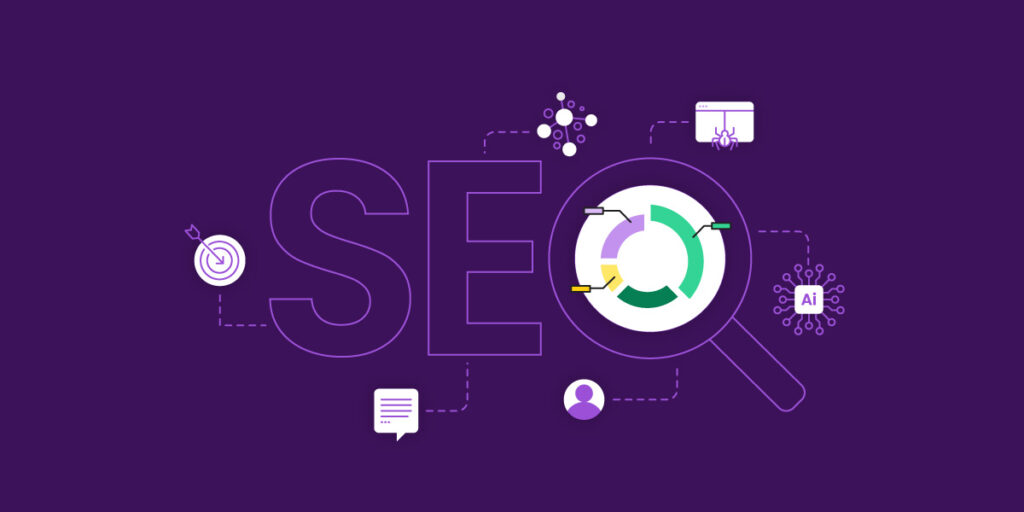SEO, or Search Engine Optimization, is the process of enhancing a website or online content to improve its visibility and ranking in search engine results pages (SERPs). The primary goal of SEO is to attract organic (non-paid) traffic by making content more relevant and authoritative for specific search queries. Search engines like Google, Bing, and Yahoo use complex algorithms to determine which pages best answer users’ questions, and SEO involves aligning your content and site structure to meet these criteria. A clear understanding of SEO definition reveals that it’s not just about keywords, but a comprehensive strategy involving technical, on-page, and off-page elements that influence how easily a search engine can find, crawl, and rank your website.
The Importance of SEO in Digital Marketing
SEO plays a critical role in digital marketing by driving qualified, intent-driven traffic to websites. Unlike paid ads, which stop generating traffic once the budget is exhausted, SEO offers long-term visibility and sustainable growth. When users search for products, services, or information, they typically trust the results that appear at the top of search engines. SEO definition highlights this trust factor as one of the key benefits—it helps businesses build credibility and authority online. Furthermore, effective SEO reduces dependency on paid advertising, lowers customer acquisition costs, and enhances user experience, all of which contribute to higher conversion rates and business growth.
How Search Engines Work
To understand SEO definition fully, it’s essential to know how search engines operate. Search engines use automated programs called crawlers or spiders to scan the internet, indexing billions of web pages by analyzing their content and structure. This process involves crawling (discovering new and updated pages), indexing (storing and organizing content), and ranking (deciding the order in which pages appear in search results). The ranking is based on hundreds of factors, including relevance, authority, user experience, and technical performance. SEO aims to optimize websites for these factors so search engines can easily find and present them to users. By aligning with search engine algorithms, businesses can improve their chances of appearing higher in search results.
Key Components of SEO
SEO definition encompasses several key components that work together to improve a website’s ranking. These include keyword research, on-page optimization, technical SEO, content creation, and off-page SEO such as link building. Keyword research identifies what users are searching for, enabling businesses to target relevant terms. On-page optimization ensures that content, titles, meta descriptions, and images are aligned with those keywords. Technical SEO addresses site speed, mobile friendliness, crawlability, and security. Content creation focuses on delivering valuable, engaging material that satisfies user intent. Off-page SEO, primarily through backlinks from authoritative sites, signals trustworthiness. Together, these elements form a holistic SEO strategy aimed at increasing visibility and driving targeted traffic.
The Role of Keywords in SEO
Keywords are fundamental to the SEO definition because they represent the language users type into search engines. Selecting the right keywords ensures that your content matches the intent of your audience. There are different types of keywords, including short-tail (broad terms), long-tail (more specific phrases), and transactional keywords (indicating buying intent). Effective SEO marketing involves researching and strategically placing these keywords throughout the site—in titles, headers, URLs, and body text—without keyword stuffing. Modern SEO also focuses on semantic search, understanding the context behind queries rather than just exact matches. By targeting the right keywords, businesses increase their chances of ranking for searches that lead to conversions.
On-Page SEO Explained
On-page SEO is the practice of optimizing individual web pages to rank higher and earn more relevant traffic. This includes optimizing content quality, structure, meta tags (title and description), headings, internal links, and images. On-page SEO ensures that search engines and users understand the topic of each page clearly. Elements like page titles and meta descriptions appear in search results, influencing click-through rates, while proper use of header tags (H1, H2, etc.) helps organize content for readability and relevance. Image alt text and URL structures also contribute to on-page optimization. By focusing on these factors, on-page SEO helps search engines index content correctly and improves user engagement.
Technical SEO Fundamentals
Technical SEO refers to optimizing the backend infrastructure of a website to facilitate crawling, indexing, and ranking by search engines. This includes improving site speed, ensuring mobile-friendliness, fixing broken links, creating XML sitemaps, implementing HTTPS, and managing structured data. Technical SEO also involves handling canonical URLs to prevent duplicate content issues and optimizing server response codes. Without proper technical SEO, even the best content may remain invisible to search engines. In the context of SEO definition, technical SEO is crucial because it lays the groundwork for all other SEO efforts, making sure that a site is accessible, secure, and performs well for both users and search engines.
The Importance of Backlinks in SEO

Backlinks are links from other websites pointing to your site and are a critical factor in SEO definition. Search engines consider backlinks as endorsements or votes of confidence, indicating that your content is valuable and trustworthy. However, not all backlinks carry the same weight—links from authoritative, relevant websites have a much greater impact than low-quality or spammy links. Building a natural and diverse backlink profile is a key off-page SEO strategy that helps improve domain authority and search rankings. Techniques to earn backlinks include guest blogging, content marketing, influencer outreach, and digital PR. Backlinks also drive referral traffic, making them an important element for holistic SEO marketing.
SEO and User Experience (UX)
User experience is an increasingly important part of SEO definition because search engines aim to provide the best results for their users. Factors such as site speed, mobile responsiveness, easy navigation, and engaging content all contribute to positive UX. Google’s Core Web Vitals specifically measure load time, interactivity, and visual stability as part of its ranking algorithm. A website that is difficult to use or slow to load will see higher bounce rates, negatively impacting SEO. Therefore, SEO marketing efforts must align with UX principles to retain visitors and encourage deeper interaction. A strong synergy between SEO and UX leads to better rankings, higher user satisfaction, and improved conversion rates.
Measuring SEO Success
Measuring the effectiveness of SEO marketing is essential for refining strategies and demonstrating ROI. Key performance indicators (KPIs) include organic traffic, keyword rankings, bounce rates, conversion rates, and backlink quality. Tools such as Google Analytics and Google Search Console provide insights into how users find and interact with your website. Analytics track which keywords drive traffic, user behavior on-site, and conversion pathways. Additionally, monitoring page speed, mobile usability, and crawl errors helps maintain technical health. Regular SEO audits ensure the website adapts to algorithm changes and competitive dynamics. Understanding these metrics allows marketers to optimize SEO efforts continually, maximizing visibility and business outcomes.
Future Trends in SEO
SEO definition is constantly evolving as search engines update algorithms and user behavior shifts. Emerging trends include the rise of voice search, mobile-first indexing, AI-powered content creation, and increased focus on E-E-A-T (Experience, Expertise, Authoritativeness, and Trustworthiness). Semantic search and natural language processing help search engines better understand user intent beyond exact keywords. Visual and video search are gaining traction, expanding the scope of SEO beyond traditional text content. Additionally, zero-click searches and featured snippets change how users interact with search results. To stay competitive, businesses must adapt their SEO marketing strategies to these trends, focusing on quality content, technical excellence, and user-centric design.
Conclusion: Understanding SEO’s Role in Digital Growth
SEO definition goes beyond keywords and rankings; it represents a comprehensive approach to making your website discoverable, credible, and user-friendly. By integrating keyword research, on-page and technical optimization, quality content, and backlink building, SEO marketing drives sustainable organic growth and competitive advantage. As search engines become smarter and user expectations rise, SEO continues to be an indispensable component of any digital marketing strategy. Mastering SEO not only increases traffic but also builds trust and fosters meaningful engagement, ultimately supporting long-term business success in the digital marketplace.
















